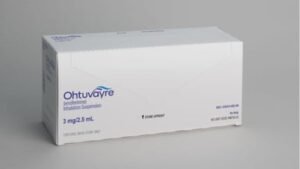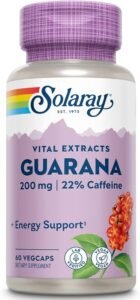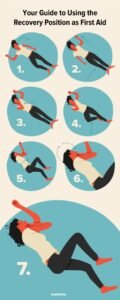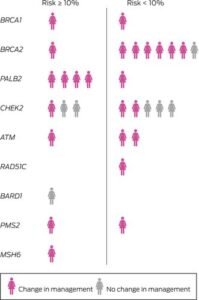One Nostril Blocked_ Causes and How to Clear It
Causes of a Blocked Nostril and How to Clear It
Read Time: 8 minutes
A blocked nostril on one side can be frustrating and uncomfortable. It may arise due to common causes like allergies, a foreign object, or sleeping positions. More serious issues, such as a deviated septum or nasal polyps, may also be to blame, potentially leading to other symptoms like snoring, nasal-sounding speech, or sinus infections. If you frequently experience sneezing, itchiness, or increased congestion at night, it may be due to mucus buildup in your sinuses. Fortunately, simple remedies like saline rinses, staying hydrated, or adjusting your sleeping posture can help relieve a blocked nostril. For allergy sufferers, over-the-counter medications such as decongestants, antihistamines, or steroid nasal sprays may provide relief. If symptoms persist or worsen, it’s essential to consult a healthcare provider to diagnose and address the underlying cause.
Understanding the Causes of One-Sided Nasal Blockage
A blocked nostril on one side can result from various factors. These include:
1. Foreign Objects
Children, in particular, are prone to inserting objects such as beads, food, or small toys into their nostrils, leading to blockages. Adults may experience similar issues with office debris, jewelry, or misused cotton swabs. Left untreated, these objects can cause pain, bleeding, infection, and difficulty breathing. Never attempt to remove foreign objects with tweezers or cotton swabs, as this may push them further in. If the object is deeply lodged, seek medical assistance for safe removal.
2. Allergens
Allergens like pollen, dust mites, mold, and pet dander can irritate the nasal passages, causing inflammation and swelling. This condition, known as allergic rhinitis, can result in a blocked nostril. Symptoms tend to worsen at night due to mucus pooling and changes in blood circulation when lying down. Chronic exposure to allergens can also increase mucus production, exacerbating the blockage.
3. Deviated Septum
A deviated septum occurs when the cartilage or bone between the nostrils is misaligned, narrowing one side of the nasal passage. A slight deviation may only cause noticeable blockage during a cold or allergy flare-up, but a more severe deviation may result in chronic congestion. If you suspect a deviated septum, it may be helpful to sleep with your head elevated or switch sleeping positions to alleviate congestion.
4. Nasal Polyps
Nasal polyps are non-cancerous growths in the nasal passages that can obstruct airflow, especially if they develop on one side of the nostrils. While they are typically benign, large polyps can interfere with breathing and may need medical attention. In some cases, polyps may be cancerous, though this is rare. It’s essential to consult a doctor for proper evaluation and treatment.
5. Enlarged Adenoids
Adenoids are lymphatic tissue located at the back of the throat. When enlarged, they can contribute to nasal congestion. This is more common in children than adults, and if swelling affects only one side, it can cause a one-sided blockage.
6. Choanal Atresia
Choanal atresia is a congenital condition where tissue growth blocks the nasal passages. Unilateral choanal atresia, affecting only one nostril, is typically diagnosed in infancy. Adults with one-sided nasal congestion are less likely to have this condition, but it may be linked to other serious health issues like genetic disorders.
Symptoms of a Blocked Nostril
When a nostril is blocked, symptoms can vary depending on the underlying cause. Common symptoms include:
-
A stuffy or runny nose
-
Altered sense of smell
-
Sneezing and itchiness
-
Snoring or sleep apnea
-
Difficulty breathing through one nostril
-
Nasal-sounding voice
-
Nosebleeds or sinus infections
In some cases, individuals may experience additional symptoms such as facial pain, headaches, or difficulty swallowing. If these symptoms persist or worsen, it’s essential to consult a healthcare provider.
Effective Remedies for Clearing a Blocked Nostril
The first step in treating one-sided nasal congestion is identifying the root cause. Here are some general treatments for relieving a blocked nostril:
Over-the-Counter Medications:
-
Nasal decongestants (e.g., Sudafed)
-
Steroid nasal sprays (e.g., Flonase)
-
Oral antihistamines (e.g., Claritin, Benadryl)
Home Remedies:
-
Stay hydrated to help thin mucus.
-
Use a saline spray or a neti pot to rinse the nasal passages.
-
Sleep with your head elevated to reduce mucus pooling.
-
Avoid allergens such as pollen or dust.
If your blockage is due to a deviated septum, surgical intervention may be necessary. A septoplasty is a procedure to straighten the septum and improve airflow, typically performed as an outpatient surgery.
Treatment for Nasal Polyps:
For nasal polyps, your doctor may recommend steroid nasal sprays or, in more severe cases, surgery to remove the polyps. Allergy treatments, including antihistamines or allergy shots, can help reduce symptoms.
When to See a Doctor
If your blocked nostril persists for more than 7 to 10 days, or if you experience additional symptoms such as:
-
Difficulty swallowing
-
Persistent headaches
-
Hearing loss or ear pain
-
Chronic sore throat or hoarseness
-
Dizziness or balance issues
It’s crucial to seek medical attention. Your doctor may refer you to an ENT (ear, nose, and throat) specialist for further evaluation.
Conclusion
A blocked nostril on one side can be caused by various factors, including allergies, foreign objects, nasal structural issues, and more. Identifying the underlying cause is crucial for determining the most effective treatment. If home remedies and over-the-counter medications don’t provide relief, or if symptoms persist, it’s essential to consult a healthcare provider to receive the appropriate care.
FAQs
-
How long should I wait before seeing a doctor for a blocked nostril? If the blockage lasts for 7 to 10 days or if additional symptoms develop, it’s best to consult a doctor.
-
Can a blocked nostril be caused by stress? Stress itself doesn’t directly cause a blocked nostril, but it may exacerbate existing conditions such as allergies or sinus problems.
-
Are nasal sprays safe for long-term use? Long-term use of nasal sprays should be monitored by a healthcare provider, as some decongestant sprays can cause dependency.
Expert Tips
-
Adjust your sleeping position to help reduce nasal congestion.
-
Use a humidifier to keep your nasal passages moist.
-
Avoid known allergens when possible to prevent irritation.
Key Takeaways
-
A blocked nostril can be caused by allergies, nasal polyps, or structural issues like a deviated septum.
-
Treatment options range from over-the-counter medications to surgical intervention, depending on the cause.
-
If symptoms persist or worsen, seek medical advice for a proper diagnosis and treatment plan.







